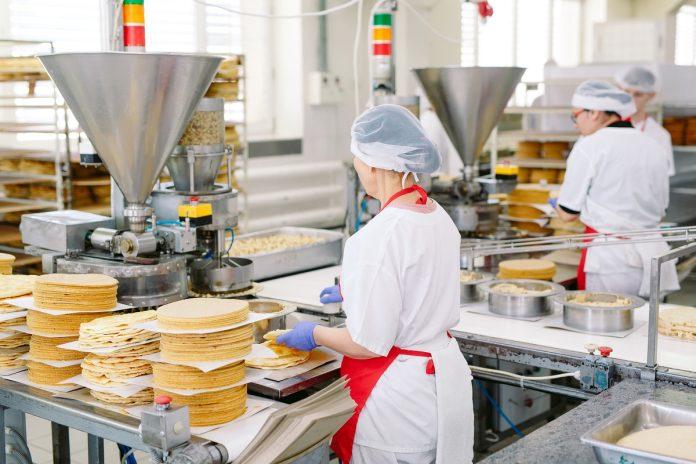As an industry that shoulders one of the most crucial responsibilities, the food processing sector constantly faces numerous challenges, particularly in its commitment to hygiene and safety. Today, amid rapidly evolving public health concerns, maintaining absolute cleanliness is more critical than ever before. This brings forth an increased relevance and dependence on disinfectants within the industry. By ensuring robust disinfection practices that comply with proper standards, food processors strive to assure consumer trust and provide safe, quality-assured products. Armed with advanced disinfection technology, the industry is taking strides towards beating bacterial and viral threats, thereby raising food safety standards to unprecedented heights.
In this comprehensive guide, we delve into the world of disinfectants in food processing, putting the spotlight on its foundational importance and the meticulous procedures required to strike a balance between hygiene, safety, and unmatched quality in the food processing industry. Continue reading to learn more.
Selecting the Right Disinfectant
In maintaining hygiene and safety in food processing, it is important that you are able to select and use the right disinfectant. Not all disinfectants are created equal, and the choice of disinfectant should be based on various factors, including the specific pathogens you need to target, the surface or equipment to be treated, and the contact time required for effective disinfection.
It is also crucial that you consider the compatibility of the disinfectant with food processing materials and the environmental impact of its use. A carefully chosen disinfectant, when used in accordance with industry guidelines, can be a powerful tool in preventing contamination and ensuring the safety of the food supply chain.
Follow Manufacturer’s Instructions
Following the manufacturer’s instructions is a non-negotiable aspect of maintaining hygiene and safety with disinfectants in food processing. Manufacturers provide specific guidelines for the proper dilution, application, and contact time of their products to ensure maximum effectiveness. Deviating from these instructions can lead to inadequate disinfection, potentially exposing products and surfaces to harmful pathogens.
Moreover, strict adherence to manufacturer recommendations helps prevent the misuse or overuse of disinfectants, which can result in chemical residues that may be hazardous to both food and personnel. Thus, to safeguard hygiene and safety in food processing, it is imperative that operators consistently heed and implement the manufacturer’s guidance on disinfectant usage.
Personal Protective Equipment (PPE)
Using personal protective equipment, or PPE, is also a fundamental measure for maintaining hygiene and safety when working with disinfectants in food processing. PPE, including gloves, goggles, aprons, and face masks, serves as a crucial barrier between employees and potentially hazardous chemicals. It shields workers from skin contact, inhalation, or accidental splashes of disinfectants, safeguarding their well-being.
Additionally, PPE helps prevent cross-contamination by minimizing the risk of employees inadvertently spreading pathogens from one area to another. Ensuring that all personnel involved in food processing wear the appropriate PPE is not only a legal requirement but also an essential practice in upholding hygiene and safety standards within the industry.
Cleaning Before Disinfecting
Cleaning before disinfecting is a foundational practice in maintaining hygiene and safety in food processing. This step is critical because disinfectants are most effective when applied to surfaces free of dirt, grease, and organic matter. Cleaning removes visible debris and reduces the microbial load on surfaces, allowing disinfectants to work more efficiently in eliminating pathogens. Neglecting the cleaning step can render disinfection less effective and compromise food safety.
By adhering to the “clean first, disinfect second” principle, food processing facilities ensure a thorough and robust defense against potential contaminants, reinforcing their commitment to maintaining the highest standards of hygiene and safety.
Proper Dilution
Disinfectants come in various formulations, and using the correct dilution ratio is essential to achieve the desired level of effectiveness without causing harm. Under-dilution may leave pathogens behind, while over-dilution can lead to ineffective disinfection. Following the manufacturer’s instructions for dilution ensures that the disinfectant is potent enough to kill harmful microorganisms while minimizing the risk of chemical residue on food-contact surfaces.
Application Methods
It is also important that you consider the different methods of application as you maintain hygiene and safety with disinfectants in food processing. Different surfaces and equipment may require specific application techniques to ensure comprehensive coverage and efficacy. Spray nozzles, foaming devices, and fogging systems are examples of equipment designed for precise disinfectant application.
You must also have to employ trained personnel who understand the correct techniques for applying disinfectants is essential. Uniform coverage, adequate contact time, and the avoidance of excessive moisture are all key considerations to prevent contamination and ensure safety.
Contact Time
Contact time, or the amount of time a disinfectant needs to remain in contact with a surface to effectively kill pathogens, is also among the crucial factors in maintaining hygiene and safety in food processing. Rushing the disinfection process by not allowing sufficient contact time can lead to incomplete pathogen eradication, leaving behind potential contaminants. Conversely, adhering to the recommended contact time ensures that the disinfectant has adequate opportunity to work its antimicrobial magic.
Rinsing and Residue Removal
After disinfection, it’s crucial to thoroughly rinse surfaces or equipment to remove any residual disinfectant chemicals. Residues left behind can potentially contaminate food products or pose health risks if consumed. Adequate rinsing, followed by proper drying, ensures that no harmful residues are present, leaving surfaces safe and free from chemical contaminants.
Key Takeaway
Maintaining hygiene and safety with disinfectants in food processing is a multifaceted endeavor crucial to the integrity of the industry. The effective practices mentioned above in this article collectively form a robust framework for ensuring that food products are safe, free from contamination, and meet the highest standards of quality. These not only protect public health but also uphold the trust consumers place in the food processing sector. And as the food processing facilities embrace these measures, they then contribute to a safer, healthier, and more resilient food supply chain for everyone.
